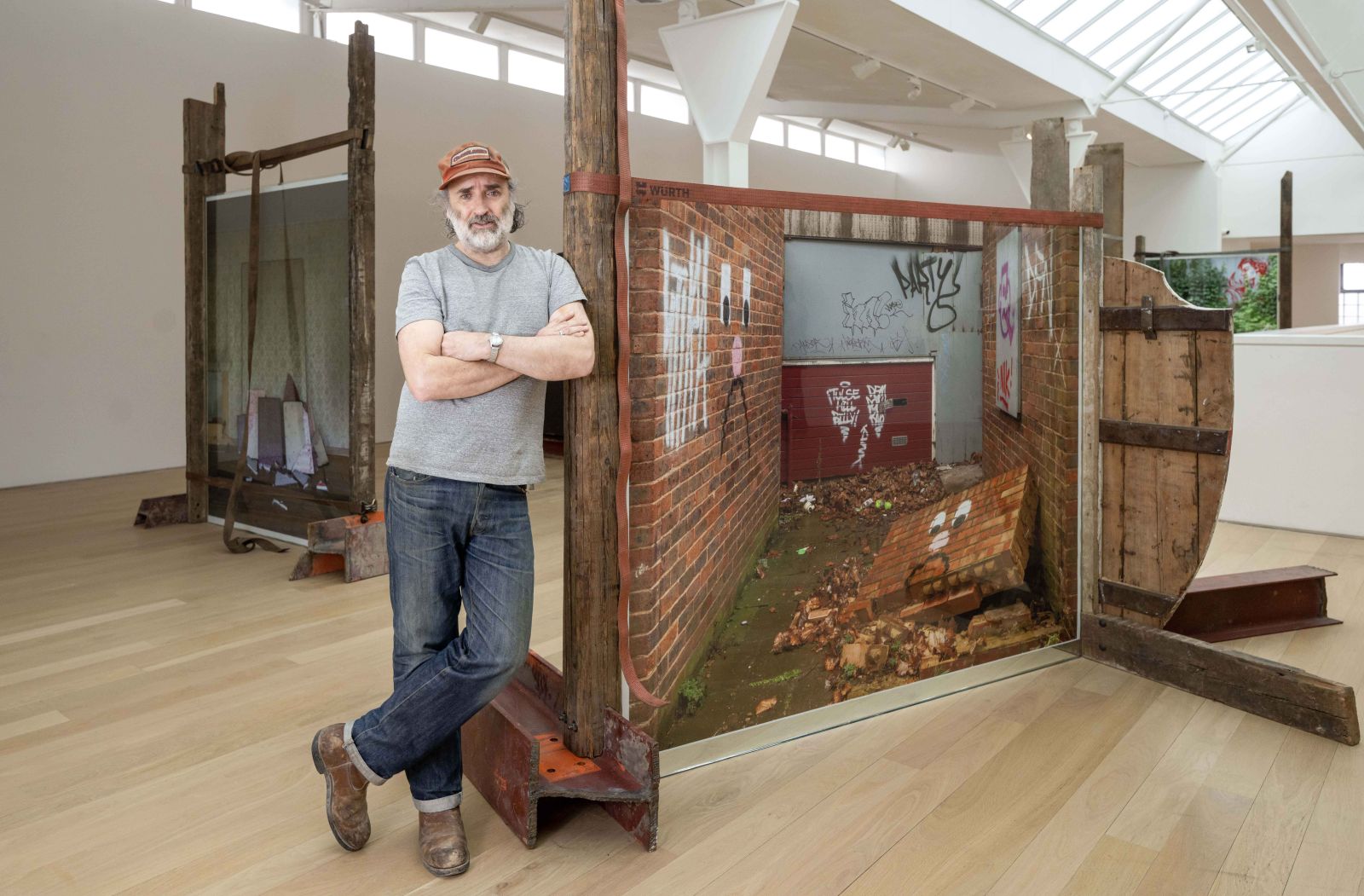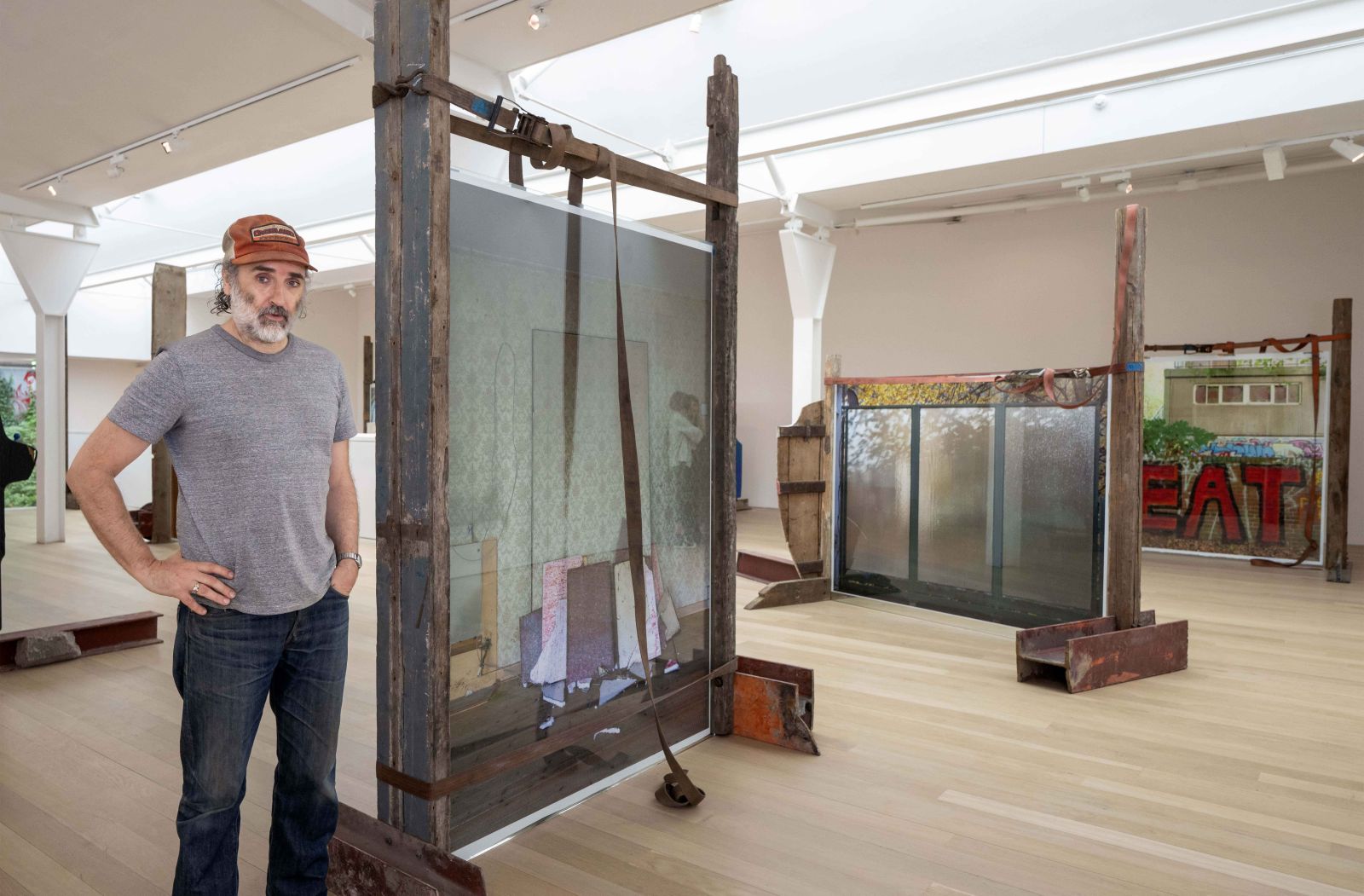Mike Nelson on art: 'Are we just going to start making for rich patrons again?'
Mike Nelson is known for dazzling installations, with his new exhibition including the meticulous recreation of a flat from a long-since demolished London estate. Greg Thomas meets the artist to discuss his simulated world-building

‘When I did the piece at Collective years ago, I spent the first few days living in the gallery, until all the debris on the floor became too much. I was sleeping on a piece of military grade foam.’ Mike Nelson is recalling the halcyon days of To The Memory Of HP Lovecraft, his 1999 exhibition in Edinburgh, preparation for which involved, among other things, hacking violent holes and lacerations into the gallery’s walls.
We are sitting in the Lower Gallery at Fruitmarket, surrounded by ‘Humpty Dumpty’, one third of Nelson’s current exhibition. This part of the show utilises the more conventional medium of photography. But on-site world-building is still important. I’ve just arrived from the gallery’s Warehouse space, in which Nelson and his team have meticulously recreated the interior of a flat from London’s Heygate Estate which was demolished across 2011–14. The simulation is realistic enough to make Jean Baudrillard blush, from the artful disarray of fridge magnets to the grimy patina on the textured wallpaper.
Nelson has been in Edinburgh since May, pouring weeks of labour into the construction. Eventually it came to feel like a sort of gruelling homage (‘a gesture, a physical invocation’) to the razed modernist landmark. ‘I think it’s important that the space feels inhabited. You can manufacture that effect to a degree, but it also needs time spent constructing, making, occupying and thinking.’
Nelson is renowned for his dazzling, all-encompassing installation works, which give viewers the impression of having been swallowed up by some parallel reality, one that reflects back uncannily on our own. Perhaps the quintessential image of his practice is from 2004 of an abandoned block of garages and workshops engulfed by a sand dune (‘Triple Bluff Canyon: The Woodshed’), included in his 2023 retrospective Extinction Beckons at London’s Southbank Centre. After a period of disillusionment with this way of working (he felt it had become commodified after his appearance at the 2011 Venice Biennale, like ‘I’d ended up building an advertising flagship for a trade fair’), Nelson has returned to it with aplomb for this Edinburgh Art Festival offering.

The effect of the tower-block simulacrum, named ‘Low Rise’, is mesmerising. Experienced alone, it’s also subtly creepy, in the way that only abandoned domestic architecture can be. But the interior spaces also became a de facto workshop, where the photographs and salvaged structures that populate the other two sections of the show were produced. It’s all part of inhabiting the exhibition during the process of creation.
In the Upper Gallery are large-scale images of the derelict Heygate just prior to its destruction, placed in huge, unwieldy timber frames. Around us as we speak are photographs of the Kurdish city of Mardin, which was undergoing massive reconstruction when Nelson participated in the city’s biennial in 2012. ‘I walked around and witnessed the debris, the detritus, the excavations, which of course I loved because it was incredibly sculptural to me.’ A series of photographs from that time showing these ‘earthworks’ and an accompanying map, collectively titled ‘A Transient History Of Mardin Earthworks’, form an esoteric dialogue of sorts with ‘Low Rise’.
‘A building demolished and an ancient city buried under construction. One demolished, one buried,’ says Nelson. ‘Both places in some sense made invisible. To evoke these places in relation to each other seemed to have a currency somehow.’ One overarching theme which preoccupies him is the fate of artists after the post-war social contract’s demise, epitomised by a social housing boom which produced Heygate. The idea of culture as a democratic right was also wrapped up in late 20th-century conceptions of the public realm. ‘Making art felt like it was part of that structure,’ Nelson adds ‘But now the structure is being disassembled faster than you can build it. That means the whole purpose of what you’re doing is brought into question. Are we just going to start making art for rich patrons again, or in the services of religion?’ Perhaps the artist’s house, too, is being torn down. Enter at your peril.
Mike Nelson, Fruitmarket, until Sunday 5 October.